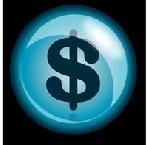
 |
|
| Financial Terms | |
| Normal probability distribution |
|
Information about financial, finance, business, accounting, payroll, inventory, investment, money, inventory control, stock trading, financial advisor, tax advisor, credit.
Main Page: finance, business, financial, stock trading, inventory, inventory control, accounting, credit, Also see related: real estate, insurance, mortgage, homebuyer, credit, home, homes, home insurance, buy home, |
Definition of Normal probability distribution
Normal probability distributionA probability distribution for a continuous random variable that is forms a
Related Terms:Normal random variableA random variable that has a normal probability distribution. CARs (cumulative abnormal returns)a measure used in academic finance articles to measure the excess returns an investor would have received over a particular time period if he or she were invested in a particular stock. Abnormal returnsPart of the return that is not due to systematic influences (market wide influences). In Base probability of lossThe probability of not achieving a portfolio expected return. Cumulative abnormal return (CAR)Sum of the differences between the expected return on a stock and the Cumulative probability distributionA function that shows the probability that the random variable will DistributionsPayments from fund or corporate cash flow. May include dividends from earnings, capital  Frequency distributionThe organization of data to show how often certain values or ranges of values occur. Lognormal distributionA distribution where the logarithm of the variable follows a normal distribution. Normal annuity formThe manner in which retirement benefits are paid out. Normal backwardation theoryHolds that the futures price will be bid down to a level below the expected Normal deviateRelated: standardized value Normal portfolioA customized benchmark that includes all the securities from which a manager normally Normalizing methodThe practice of making a charge in the income account equivalent to the tax savings ProbabilityThe relative likelihood of a particular outcome among all possible outcomes. Probability density functionThe probability function for a continuous random variable.  Probability distributionAlso called a probability function, a function that describes all the values that the random variable can Probability functionA function that assigns a probability to each and every possible outcome. Skewed distributionprobability distribution in which an unequal number of observations lie below and Standardized normal distributionA normal distribution with a mean of 0 and a standard deviation of 1. Probability DistributionA list of all possible outcomes and the chance of each outcome distribution costa cost incurred to warehouse, transport, or deliver a product or service net cost of normal spoilagethe cost of spoiled work less the estimated disposal value of that work normal capacitythe long-run (5–10 years) average production normal cost systema valuation method that uses actual normal lossan expected decline in units during the production process normal spoilagespoilage that has been planned or foreseen; is a product cost probability distributiona range of possible values for which each value has an assigned likelihood of occurrence Normal (bell-shaped) distributionIn statistics, a theoretical frequency Spoilage, abnormalSpoilage arising from the production process that exceeds the normal Spoilage, normalThe amount of spoilage that naturally arises as part of a production Distribution centerA branch warehouse containing finished goods and service Distribution inventoryInventory intended for shipment to customers, usually Related to : financial, finance, business, accounting, payroll, inventory, investment, money, inventory control, stock trading, financial advisor, tax advisor, credit. |